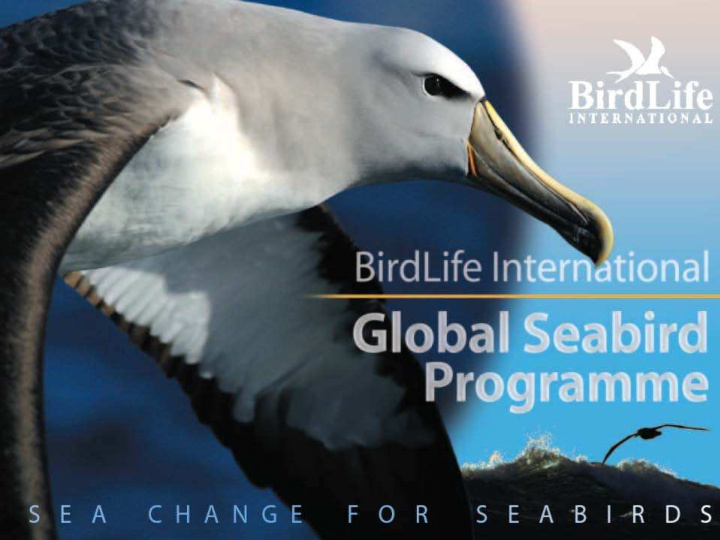



The Potential Impact of Fishing Activity in the SPRFMO Area to Seabirds
This paper is the first assessment of the potential risks posed by fisheries in the SPRFMO area to seabirds Looks at fisheries overlap with seabird density distribution in the high seas Limited by available catch data and any direct information on seabird bycatch in most fisheries in the SPRFMO area We use data available to us from the Secretariat for 3 years 2007-9 and seabird tracking data to create maps Hadoram Shirahai
• Maps were created for breeding and non-breeding distributions for each South Pacific seabird species for which data are available - 22 • There is a standardised method for estimating density distribution – discussed in the paper • Maps were also made for all species aggregated ,which show the utilisation distributions illustrating the area in which the birds spend 50, 75 ,95 and 99 % of their time at sea in the SPRFMO area. • Not all likely affected species are included e.g. No tracking data for penguins, pelicans or for the Pink-footed Shearwater which is endemic to the coast of Chile. • Catch data had to meet the 3 vessel rule and be in a form that the secretariat could extract so only 59-65% of reported catch for the period chosen was mapped. Kim Westerkov
Antipodean Albatross (VU) Parkinson’s Petrel (VU) Buller’s Albatross (NT) Chatham Albatross (VU) Chatham Petrel (EN) Cook’s Petrel (VU) Grey Petrel (NT) Salvin’s Albatross (VU) Sooty Shearwater (NT) Kim Westerkov
Chatham albatross Buller’s albatross Frederic Pelsy Species which indicate the most overlap with this fishery are non- breeding Black-browed, Buller’s, Salvin’s and Chatham Albatrosses. However another species potentially at risk is the Pink footed Shearwater for which we have no data. K. Baird Luis Cabezas, ATF
• There are extensive industrial and artisanal small scale fisheries along the Pacific coast of South America and while most effort is likely to be inside EEZs, some appear to occur in the SPRFMO area. • Seabirds likely to be at risk in these demersal and driftnet fisheries for hake include the critically endangered Waved Albatross and the Black Petrel. Robert Medina, ATF
Significant data gaps in fisheries effort distribution and seabird interactions in target fisheries in the SPRFMO area High levels of overlap between the distribution of seabirds vulnerable to bycatch and mackerel and squid fisheries Bycatch data are needed for the mackerel trawl fisheries and information on likely interactions with purse seiners and squid fisheries Mitigation measures are well developed for trawlers and precautionary conservation measures could be developed for SPRFMO Kim Westerkov
Recommend
More recommend